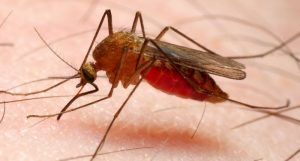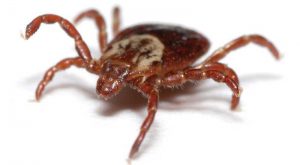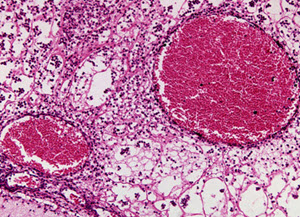Fascioliasis caused by F. hepatica
Fascioliasis is a parasite infection caused by members of the genus Fasciola. When humans develop fascioliasis, the species Fasciola hepatica is often the culprit. In this article, we will therefore focus on fascioliasis caused by F. hepatica.
F. hepatica has a great global distribution and can utilize a wide selection of hosts. It must however have a certain type of freshwater snail as intermediary host and this limits its distribution to areas that are wet and warm enough for these freshwater snails.
An adult F. hepatica can reach a length of 3.5 cm and a width of 1.5 cm.
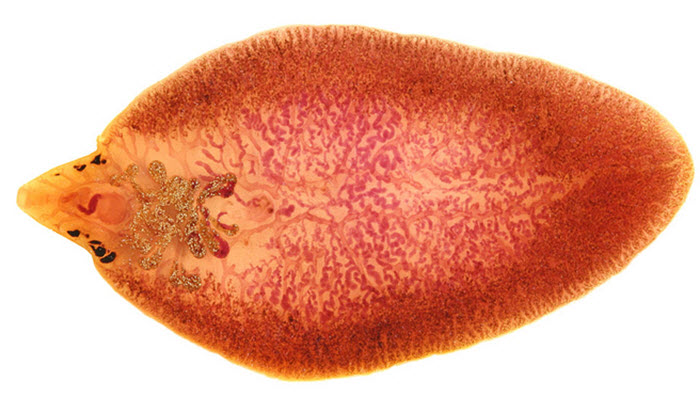
Where in the world does F. hepatica live?
F. hepatica is present on all continents except Antarctica.
The incidence of human infection varies a lot between the different countries and regions where F. hepatica is found. F. hepatica is for instance present in Sweden, but the number of people infected with the parasite in Sweden is very low. In the highlands of Bolivia and Peru, the rate of infection in humans is very high. In Egypt, the rate of infection is so high that it is considered a major national health problem.
Vaccine against fascioliasis
There is no vaccine available against fascioliasis, but a lot of research is carried out with the aim of creating one since fascioliasis is such a big problem for the cattle and sheep industry in areas where these parasites are present.
Catching fascioliasis
Humans typically get infected with F. hepatica by eating raw plants grown in wet areas, especially if there is also a lot of grazing animals present where the plants grow. The parasites are attached to the plants and enter the human body this way. They can for instance hitch a ride with Pistia stratiotes and Nasturtium officinale.
A human can also be infected through water containing free living parasites that haven’t found any plant to attach to yet. Eating food rinsed in such water is one example of a possible transmission route.
It is possible for a human to get infected with F. hepatica by eating meat from an infested animal if the meat hasn’t been cooked well enough. The liver is especially risky, since the parasites gather there during one part of their life cycle.
Symptoms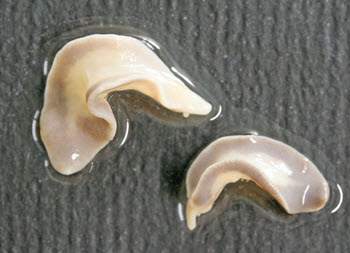
- Weight loss
- Anaemia
- Diarrhoea
- Listlessness
The most dangerous symptoms will typically manifest soon after ingesting the parasites. The newly arrived parasites will migrate to the host’s liver and start eating liver tissue, causing various symptoms from the liver. The parasites can cause a lot of damage to the liver, including widespread tissue death and bleeding. If the liver stops working, the infestation is lethal for the host.
As the parasites mature, they migrate to the bile ducts to feed on bile duct tissue and blood. The infection is now beyond its acute phase and has entered its chronic phase. The body can react to the presence of the parasites by creating fibrous tissue. This makes the bile ducts thicker and leads to decreased functionality. The parasites can also cause edema and inflammations in the bile duct area.
Treatment
F. hepatica is sensitive to many anti-parasite medicines, including triklabendazol, klosantel, oxyclozanide and nitroxynil. In many countries, only triklabendazol is approved for the treatment of infected humans. Triklabendazole is capable of killing both larvae and adult F. hepatica parasites.
In cattle, the fungi Pochonia chlamydosporia can be used to kill the parasite’s egg. This treatment is not approved for human use.
Lifecycle
- The adult F. hepatica parasite is living in the bile ducts of its host, feeding on blood and tissue.
- The adult parasite lays eggs in the bile ducts.
- The eggs hitch a ride with the bile to proceed through the host’s digestive system.
- The host defecates and the eggs leave the host’s body with the faeces.
- Now, two conditions must be fulfilled for the eggs to survive and develop:
- The environment must be wet enough.
- The environment must be warm enough, at least 10 degrees C.If these two conditions are met, the eggs will typically hatch within 10-15 days.
- The larvae that emerge when the eggs hatch are known as miracides. The miracides need to find the right type of freshwater snail to continue the life cycle. Several different species of freshwater snail are suitable hosts, including Galba truncatula.
- If a miracide finds a suitable freshwater snail and manages to enter it, the miracide will start reproducing asexually within the body of he snail by forming cysts.
- Each cyst contains germinal cells. Over time, the germinal cells develop into rediae.
- The rediae will develop into free swimming cerkaria larvae.
- The cerkaria larvae leaves the snail. Their aim is to find a plant to attach themselves to, but sometimes they have to spend quite a lot of time floating around in the water first.
- The cerkaria larvae attaches itself to a plant, where it forms a protective capsule and starts producing metacerkaria.
- The metacerkaria are resting and can wait for a very long time to encounter a suitable host.
- The plant is eaten by a suitable host, such as a ruminating animal or a human. The metacerkaria wake up from their rest when they are inside the digestive system of the new host.
- The metacerkaria borrows through the host’s intestinal wall to leave the digestive system and enter the liver.
- The parasites take up residence in the host’s liver where they feed on blood and liver tissue. (This is a stage where they host can become very sick or even die from liver failure.)
- After spending several weeks in the liver (sometimes up to 12 weeks or so), the parasites leave the liver and move into the host’s bile ducts.
- Inside the bile ducts, the parasites develop into adults and the life cycle starts over again.
